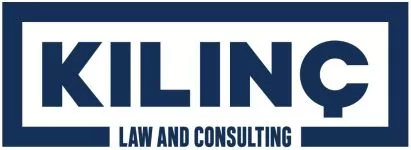INTRODUCTION
As stated in Article 8 of the Commercial Advertising and Unfair Commercial Practices Regulation ("Regulation"), comparative advertisement is permitted by not including competitors' product name, trademark, logo, trade name, business name or other distinctive elements. In the event that it causes unfair competition, comparative advertisement misleads the consumer, and unlike other laws, it is prohibited in Turkish Law.
In the continuation of this article, the principles of comparative advertisements in Turkish Law will be emphasized, examples are also mentioned.
I. ADVERTISEMENT AND COMPARATIVE ADVERTISEMENT CONCEPT
Advertisement is a form of promotion supported by visuals in order to increase the recognition of a good in the advertising market and sales rates. These promotions may also take the form of placing the goods and services of the competitor company by highlighting the advertiser's own business, goods or services.
As stated in Article 4 of the Regulation, comparative advertisement refers to "advertisements comparing matters related to the goods or services promoted with matters related to competing goods or services to meet the same purpose or the same need".
Therefore, advertisement can appear in the following ways:
- to show the company's own goods and services superiorly, to emphasize its distinctive qualities from competing companies.
- indicating that their goods and services are superior, attractive or equal to those of their competitors by using the means of connecting to the competitor's goods and services.
II. ARRANGEMENTS FOR COMPARATIVE ADVERTISEMENT
Regulations on comparative advertisements in Turkish Law are dealt with in many legislations. As stated in the 5th paragraph of the article 55 of the Turkish Commercial Code ("TCC") numbered 6102 the expression is given. "In a way that he / she may misrepresent himself, his goods, work products, activities, prices, falsehood, misleading, unnecessarily misconduct or unnecessarily take advantage of his reputation; compare others, goods, business products or prices, or put the third party forward in similar ways"
TCC Art. 55 generally regulates advertisements and sales methods that constitute unfair competition and other illegal acts. In this context, comparative advertisements may constitute unfair competition in some cases. This unfair competition means, to mislead within the scope of the goods and services of competitors, to abuse the opponent unnecessarily, or to take advantage of his reputation and recognition.
Comparative advertising is not prohibited, as a rule. However, providing unrealistic and misleading information while making comparative advertising, unfair misconduct or benefiting from its reputation constitute unfair competition. In the case of making comparative advertisement, it was also discussed in the decisions of the Advertisement Board that unfair competition was caused.1
In addition, as stated in the article 61 of the Law No. 6502 on the Protection of Consumers ("TKHK") "(1) In connection with commercial advertising, trade, business, craft or a profession; to ensure the sale or lease of a good or service, to inform or persuade the target audience; these are the marketing communication announcements made by advertisers in any media in written, visual, audio and similar ways. (5) comparative advertisement of competing goods or services that meet the same needs or for the same purpose can be made." Thus, it is emphasized that comparative advertisements are legal in terms of consumer law.
It is important to comparative advertisements but as with commercial advertisements, be honest and correct in accordance with the legislation and principles set by the Advertisement Board, general morality, public order, and personal rights.
III. USE OF COMPARATIVE ADVERTISEMENTS IN TURKEY AND IN THE WORLD
Comparative advertisements in Turkish Law have been arranged within the framework of Article 8 of the Regulation, and are permitted only under the terms and conditions below. These are respectively;
- Not including the product name, brand, logo, trade name, business name or other distinctive elements of competitors
- Not deceptive and misleading
- Does not cause unfair competition
- Compared goods or services meet the same needs or be for the same purpose
- Comparing something that will benefit the consumer
- Objective comparison of one or more material, substantial, verifiable and typical features of the goods or services compared, including their price
- Proof of claims based on objective, measurable, numerical data with scientific tests, reports or documents,
- Failure to disparage or discredit competitors (...) their goods, services, activities or other features,
- In the comparison of goods or services whose origin is specified, the goods or services must be from the same geographical location,
- Does not cause confusion with the advertiser and its competitor's brand, trade name, business name or other distinctive sign or goods or services,
- Not to violate the principles set by the Advertisement Board
To target direct competitor of the trademark in Turkey and due to aim at gaining market share in the advertising market, this application, which is not allowed and prohibited, finds application in almost all of its advertisements when looking at other countries in the world. United States, India, Philippines, Taiwan, Australia, Brazil and Canada are the leading countries.
Comparative advertisements are used quite frequently, especially by big brands operating in the fields of food, beverage, automotive and technology worldwide. Comparative advertisements that find application area abroad, are mostly advertisements made by answering each other in their advertisements by making references to your opponent or by using a reminder item.
It was forbidden to offer advertisements to consumers in a comparative way, to use signs to remind the rival brand, and to make perceptual directions that would evoke connotations for many years in Turkey. Trademark owners are in this competitive environment where they try to enter the market and exist, had to show themselves to be remarkable and develop different strategies to maintain their presence in the advertising market.
Today, however, comparative advertising is only made in Turkey, taking into account the matters mentioned in Article 8 of Regulation, it is done by means of more connotation without damaging the commercial reputation of the competitor company without having a direct brand and logo. The most well-known examples of this are included in chemical product advertisements.
With the first publication of the Commercial Advertising and Unfair Commercial Practices Regulation on 10.01.2015, mutual advertising was permitted using the name, trademark, logo or other distinctive forms or expressions of the competitor company whose examples we followed. However, with the amendment made on 28.12.2018, comparative advertising practice was significantly restricted by banning the product name, trademark, logo, trade name, business name or other distinctive elements of competitors.
The Advertisement Board, which operates under the Ministry of Commerce, makes very rigorous decisions in the pursuit of comparative ads. Advertisement Board always finds advertisements that use distinctive elements such as logo, brand, name for the competitor product or service against the law.2
IV. COMPONENTS OF COMPARATIVE ADVERTISEMENTS
Comparative advertising has two components: "comparison" and "building relationships with competitors". In order for comparative advertising to be in question, two elements must be present.
1) Comparison
Comparative advertising comes to the fore when certain elements, qualities and practices are compared with each other, which will affect the consumer's decision to purchase a good or service.
In this comparison, it is possible to imply that the merits and superiorities of the advertiser's products are higher than the competing products or that the advertised product is the same as the competing product.
2) Contraction Connection with Competitor
"Connection" is another key element for the presence of comparative advertising. A connection with the competitor must be established in the ad. This connection may relate to the opponent's person, property, service, price, or other features. In the advertisement made, the competitor implied directly or indirectly should be understandable and identifiable by the relevant consumers. The important thing here is that the consumer may detect this.
Therefore, in order to be able to talk about comparative advertising, a connection must be available where the opponent may be identified. The opponent is not required to be mentioned by name. The important thing is that the environment addressed by the advertisement is sufficiently determinable by the opponent, within the framework of the characteristics of the concrete event by a part that will not be underestimated.3 The connection may be open (to describe the opponent's goods or services by writing, words, pictures) or it may also be closed (first, cheaper, best, single) to suggest the goods or services of certain competitors around the customer regarding the expressions or images used.
For example, in some advertisements, a certain competitor is not targeted, the content of the advertisement is generally all or a certain part of the competitors. In this case, if the segment addressed by the advertisement can detect this, it should be stated that the comparison is in question.
V. BURDEN OF PROOF
In accordance with Article 9 of the Regulation, the advertiser is obliged to prove the accuracy of the claims in commercial advertisements. It must be proved with scientific valid information and documents. Where necessary, information documents must be submitted, from relevant departments of universities or accredited or independent research, testing and evaluation institutions.
VI. CONCLUSION
Comparative advertisements, unlike the law applicable in many other countries, in Turkey, but it is possible under certain terms and conditions, both due to the fact that it is within the scope of unfair competition provisions regulated in the TCC, as well as being subject to frequent audits in terms of Regulations and Advertisement Board Decisions.
As stated in detail above, it is possible to make comparative advertisements, which include two elements as "comparison" and "establishing relations with competitors", considering the main condition and other relevant conditions, not to include any product name, trademark, logo, trade name, business name or other distinctive elements of competitors and to comply with ethical principles and rules without causing unfair competition.
Footnotes
1. See. Advertisement Board, D. 2014/1791, T. No. 235, T. 22.4.2015; Advertisement Board, D. 2015/1002, T. No. 242, T. 10.11.2015.
2. See. Advertisement Board, D. 2018/3160, T. No. 278, T. 13.11.2018; Advertisement Board, D. 2017/1324, T. No. 262, T. 11.7.2017; Advertisement Board, D. 2015/364, T. No. 236, T. 12.5.2015.
3. The established case-law of the German Federal Court of Appeal. See for example. BGH GRUR 1963, 372, 374 (Wäschestärkemittel), GRUR 1966, 327, 329 (Richtpreiswerbung I); GRUR 1997, 304, 305 (Energiekosten-Preisvergleich II).
The content of this article is intended to provide a general guide to the subject matter. Specialist advice should be sought about your specific circumstances.


